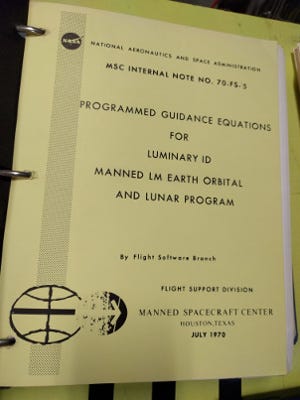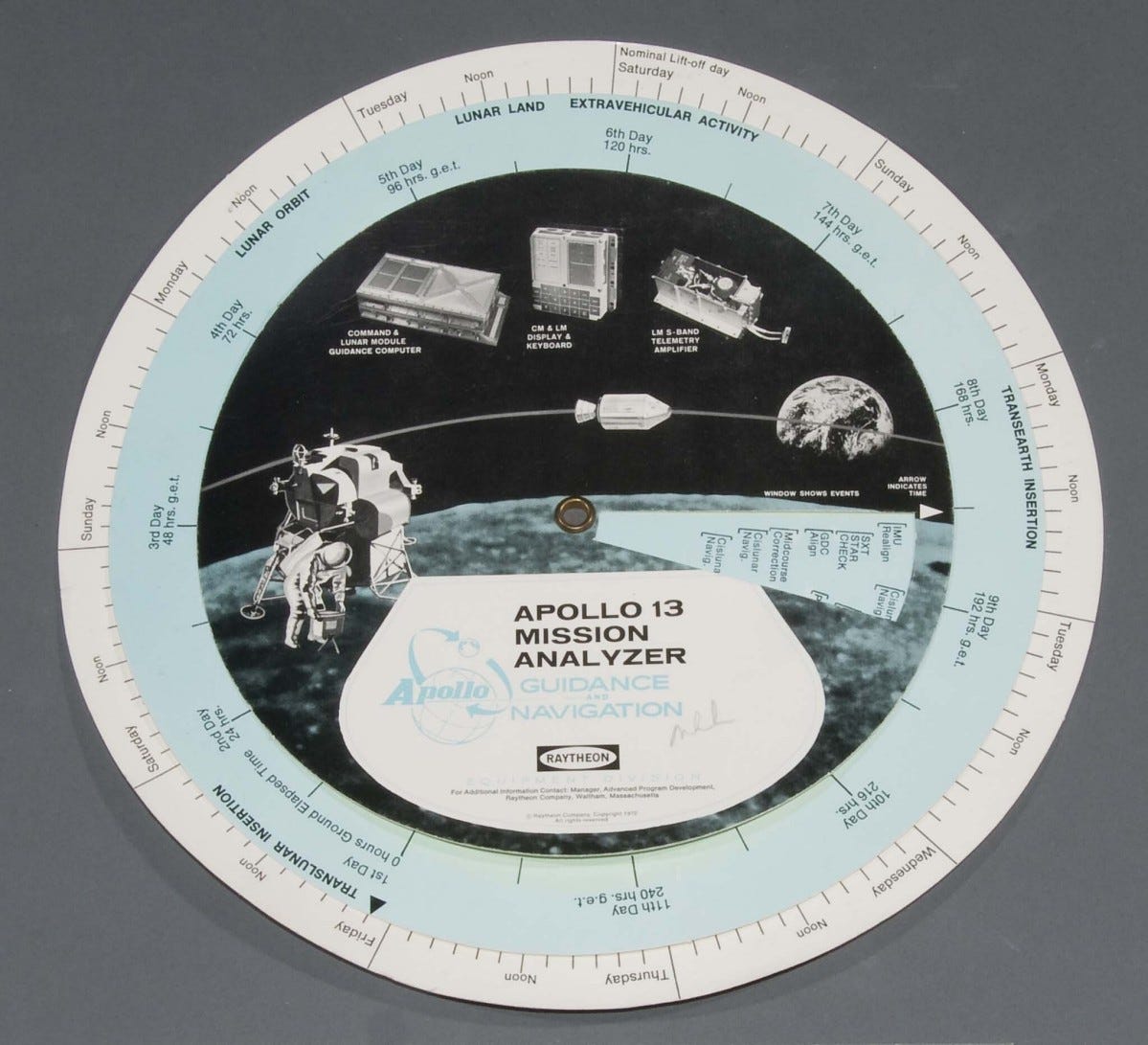"Norton Needs Glasses!"
Looking back on the Apollo Missions to the Moon, we have the sense that the Lord was looking out for us, but He sure had a sense of humor!
I was browsing through Bill Gates’ memoir of his early encounters with computing and programming and how a programmer at TRW, named John Norton, was an enormous influence on him.
He conveyed an image of Norton looking over his shoulder, admonishing him for sloppy code, making dumb errors, and simply poor programming.
I encountered John Norton after I interviewed Margaret Hamilton, the Draper Labs programmer who later became famous after a photograph of her next to printouts of Apollo software was published on the web. “You need to talk to John Norton,” she said. “He was the guy who left off the hyphen that caused the Mariner spacecraft to crash.”
The what? Who? I booked a trip to LA, and we met in a hotel restaurant. He didn’t say so, but I was able to gather that he was involved with highly-classified work, and thus we had to meet off-site. Almost immediately after sitting down, he pulled out a newspaper clipping from the New York Times:
“For want of a hyphen Venus rocket is s lost.”
He didn’t mind letting me know that the story was true (actually it wasn’t a “hyphen” but a “bar”—a mathematical symbol indicating smoothed data).
Why did Margaret Hamilton tell me to look him up? I quote from an interview with Jack Garman of NASA about the man:
A fellow named John Norton, he’d be a good one to get hold of if you ever can, TRW in those days. I don’t know where he is now. He was a genius. Like many geniuses, he had trouble communicating with management, okay, but in the computer game, he was a genius. TRW had many roles in those days, but part of it was continuous independent assessment of what was going on. John’s task was to look at all the onboard software code and do what is today called code inspections. It’s a normal part of testing. It wasn’t done in those days, except that John Norton did it.
The way he’d do it is, he’d take this awful assembly language and translate it back into his own version of a readable higher order language. The Norton Document, as we called it, that he put out for every version of every program, all typed by hand—no word processing in those days—was our Bible. We actually used it the same way somebody might use a Fortran listing or higher order language listing of a program to analyze their program.
At our meeting, John showed me one of those documents, and remarked, as Garman said, that he typed the whole thing himself on an electric typewriter—”there was no word-processing in those days.” Margaret said that Draper Labs would ship printouts to Norton, and he would respond with his by-now-famous critiques. They called his writing “NORTRAN”—a pun on the programming language FORTRAN then in common use.
Others expanded on Garman’s remark: that Norton had the ability to “reverse-compile” code: to look at a listing of object code and tell you what the original high-level code was. Many programmers believe this is impossible, akin to violating the Second Law of Thermodynamics. True?
Now for the comment at the top of this post. One of the programmers for Apollo (not Margaret Hamilton) sent off a document for Apollo 7 to NASA in Houston, only to receive, 24 hours later, a harsh critique from Norton in his usual style. The programmer revised his work, and in the middle of the document, he wrote in the margins, in tiny print, “Norton Needs Glasses.” He either assumed Norton would not read the document carefully, of if he did, he would take the comment as a joke.
He read it, and he was not amused. What followed next was an episode of Rashomon:
Norton demanded that the programmer be fired. The young programmer was hauled before his supervisor, who chewed him out, in his words, “with a wink and a smile.” Margaret claims that it was all in fun, and there were no hard feelings at Draper Labs. Another Draper programmer, Don Eyles, had a different opinion: he thought Norton was overbearing and that his critique of Draper programmers was unfair. The two did not get along.
One programmer “…went on to say that a copy of that GSOP [the programming plan for the mission] should be placed in the Smithsonian or some other museum, because the story demonstrates that a sense of humor is a valuable asset when working on a large program under intense pressure.”
At the end of our meeting in LA, John handed me an “Apollo 13 Mission Analyzer”: a cardboard wheel that was handed out to journalists and others to indicate the sequence of actions planned for the Apollo 13 mission to the Moon. The famous GSOP report, with the comment in the margins, is not in the Smithsonian, but this device is. John signed it on the inside of a flap.
The irony is that Apollo 13 never made it to the Moon. It was not for the lack of a hyphen, but for a cascade of minor glitches, which cause the mission to abort.









